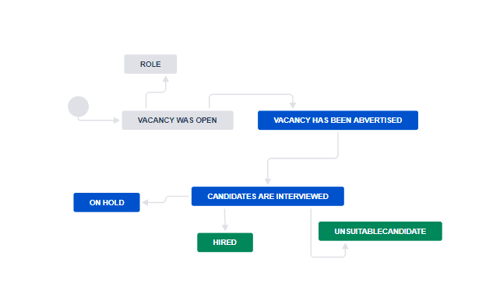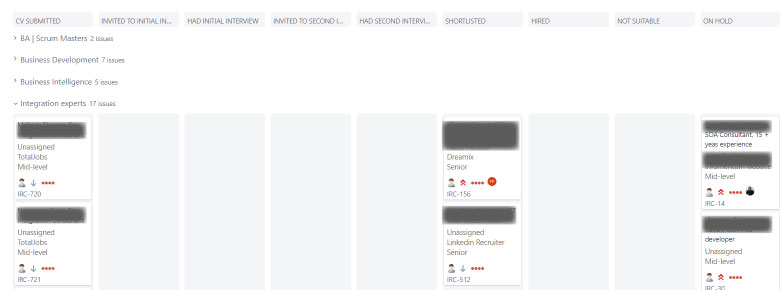Diversity is in Infomentum's DNA. From our Directors to team members, we strongly believe in a multi-cultural and inclusive work environment. It's the reason we became a Skilled Worker Visa (formerly a Tier 2 General work visa) sponsorship company.
The sponsor licence enables us to attract and welcome talent from more countries around the world. Unfortunately, from an HR perspective, attracting talent from outside of the UK is becoming harder. The new points-based immigration system for all EU and non-EU Nationals that came into place on the 1st January 2021 has added even more complexity. A well-defined recruitment process's methodology is crucial for attracting the best and most suitable talents.
We asked Molly Reason, our HR Operations Executive, how to set up an effective and fair recruitment process compliant with the UKVI (UK Visas and Immigration) regulations. Molly explained that to hold the Skilled Worker Visa licence, a company must demonstrate well-defined practices and procedures that conform to the licence holder's responsibilities.

We thought how to apply the same agile principles to fix our clunky recruitment process and turn it into the best going.
- Molly Reason, HR Operations Executive at Infomentum
Time to transform our recruitment process.
Our old hiring process was Excel-based. We used spreadsheets to track candidates' progress, feedback from reviewers, interview dates and outcomes. This approach wasn't collaborative and led to numerous bottlenecks and problems. We wanted a new sleek process to give us one point of reference and a visual representation of the entire recruitment journey from advertising a position to offering an applicant a role within our Infomentum Family.
Initially, the agile methodology was successfully adopted by our Development and Support teams. Later, our Operations embraced Agile and never looked back. "So we thought about how to apply the same agile principles to fix our clunky recruitment process and turn it into the best going.", said Molly. It felt right to test the agile approach in this field of HR too.
We started by mapping out the end-results; we wanted to store all data related to recruitment in one place. Our goal was to simplify managing candidates, assigning reviewers and adding updates. We wanted to guarantee a 360-degree view and fair assessment of all candidates. Collaboration, and inclusion are vital for us, these are two of the four values we live by at Infomentum.
Recruitment workflows and boards.
It was time to brainstorm our future perfect recruitment process. Having seen how other projects use Jira (Atlassian) and Kanban boards, we worked with Natalia Bazanova, our Head of Marketing, to turn our vision into reality. We agreed to have two types of Jira issues: Vacancy and Candidate.

Jira issue types used for our Recruitment project.
We identified and created two separate workflows to reflect the changes in their status. And finally, to make it all clear and visual, we added Kanban boards. In case you are not familiar with Kanban boards, they visually depict work at various stages of a process using cards to represent work items and columns to represent each stage of the process (Wikipedia).

A workflow for issues of type Vacancy.
Here is our enhanced hiring process implemented in Jira. Once we advertise a job, whether with an agency from our PSL (Preferred Supplier List), on recruitment sites, internally or on social media channels, we create a corresponding Jira issue of the type Vacancy. For each received CV, we generate a Candidate issue, filling out all of the available fields to describe that applicant. All candidates' records are then linked to the role issue. As a new job seeker progresses through the recruitment process, we can easily drag-and-drop their corresponding record (adding comments along the way) to the next stage, such as 'Invited to interview', 'Had interview', 'Shortlisted', 'Hired' or 'Unsuccessful'.
The main benefits of applying Jira to recruitment.
Are we happy with the new Jira-based recruitment process? Undoubtedly yes. Although the transformed process has fulfilled our vision, there are still improvements to be made. We plan to introduce email reminders if a review or any other actions are due. We have also identified another challenge: we still copy and paste data from the CV into Jira issues. Even though the benefits outweigh this inconvenience, we hope our busy integration team finds time to implement a software solution to eliminate manual re-keying.
Among the key benefits of the new recruitment process, we can mention the following:
- All information about our vacancies and candidates is held in one place. We now have complete visibility and traceability of all roles and applicants.
- One point of communication. We can assign reviewers to the task asking for feedback rather than emailing them CVs. Directors, HR, and Heads of Departments can review vacancies' status or access information about potential candidates.
- We can run various reports, for example, how many candidates applied through LinkedIn, to adjust our recruitment strategy.
- Having a transparent, clear hiring process means we are compliant to the UKVI requirements and are able to maintain our license.
A hiring process implemented using Jira has never meant to imitate a professional recruiting software. Still, if your organisation is already using Jira and looking for a new HR recruitment software, give Jira a chance. We always stay open-minded and try new ideas and approaches. At Infomentum, the agile methodology is not only used for software development but also successfully applied to the other areas of business. With our new slick recruitment process, we are ready to welcome top talent to our Infomentum family.
How did you improve your recruitment process? Don't forget to share your story and tips with us!
If you enjoyed this blog, please Click-to-Tweet! Thank you.




![Tweet: How to reuse Jira to create a slick & efficient hiring process.[source: Infomentum] https://ctt.ac/00Pb1+](https://clicktotweet.com/img/tweet-graphic-3.png)




